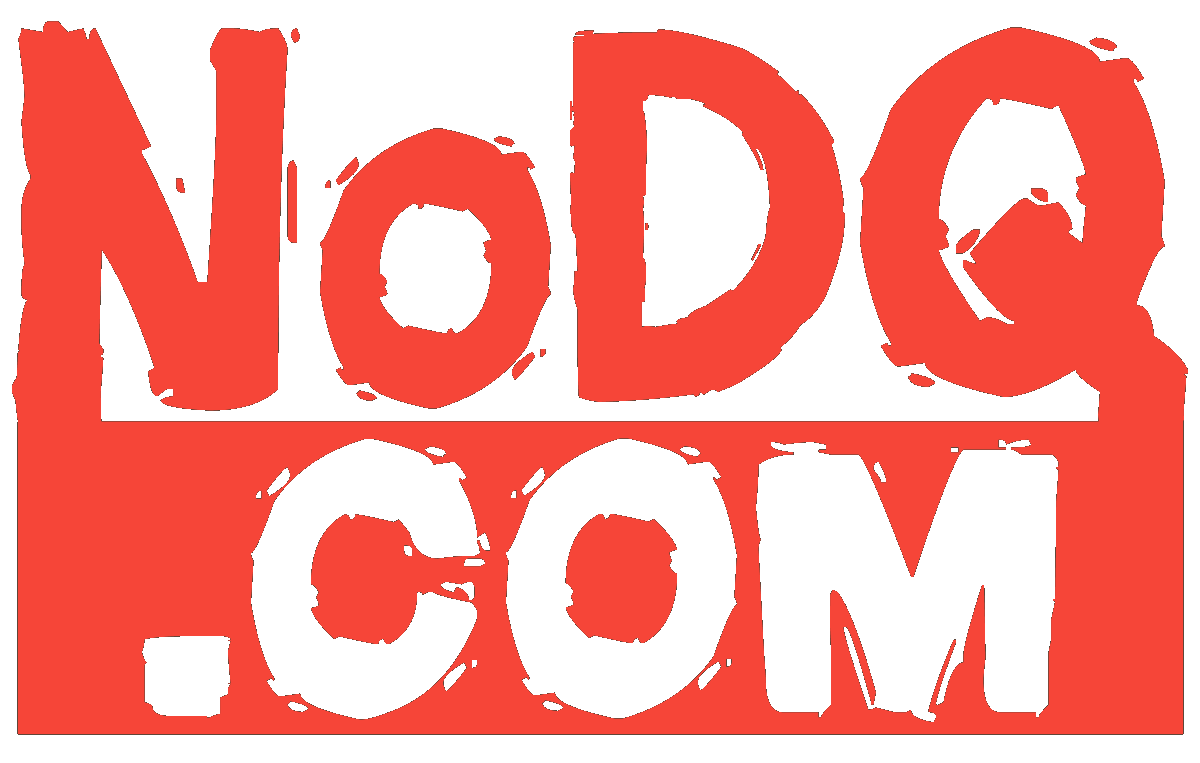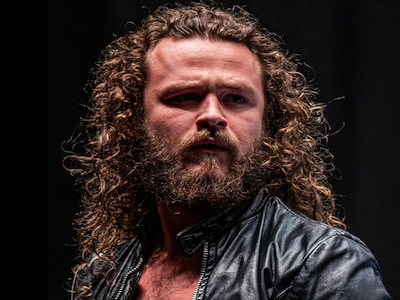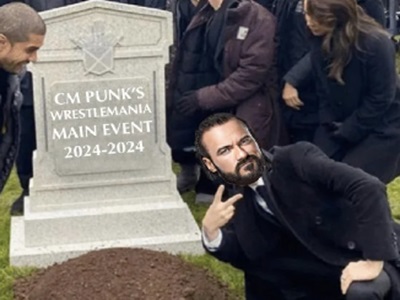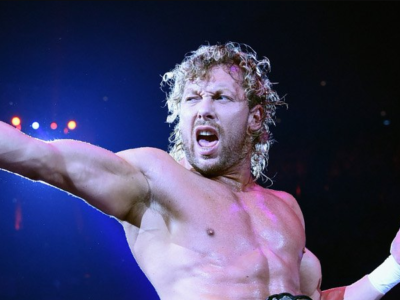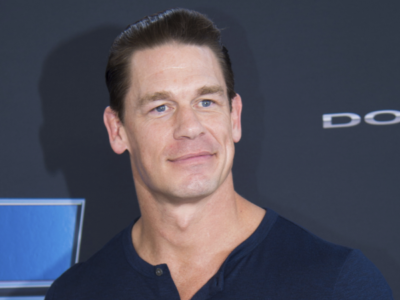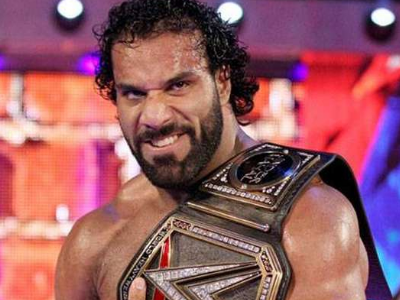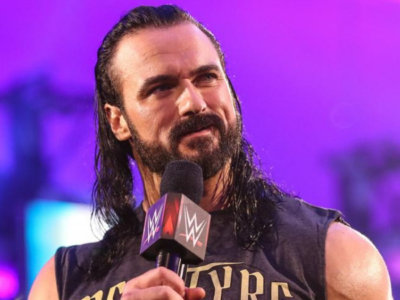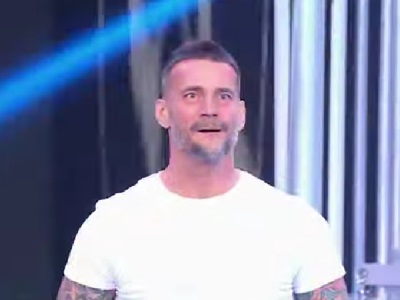The Steamy Files: Mr. Levesque, Tear Down This Center
“That goes for everybody. Are you a good traveler? Are you a good locker room guy? Are you a good teammate? I think it was a favor to both Randy and Brock to work that show in front of a big crowd and learn how to lose and learn how to lose the right way” – Jim Ross, Grillin JR; December 2021
In 2013, WWE opened its Performance Center (henceforth referred to as PC) as a replacement for FCW. The idea was to have a state-of-the-art facility operated by WWE where they could train their future “superstars”. More than 10 years later, I believe the time has come to declare this venture a failure.
The reason this column came to mind was seeing The Rock return to WWE. Dwayne Johnson is 51 years old, and while he’s still in great shape, the need to bring him back to (potentially) headline WrestleMania against Roman Reigns shows that WWE lacks faith in its’ current talent roster. If we are to believe the rumors about what plans are in place for WrestleMania nights 1 and 2, we are looking at CM Punk vs. Seth Rollins and Roman Reigns vs. The Rock.
There are some whispers that maybe The Rock vs. Reigns will go down at Elimination Chamber given that it will be taking place in a large stadium in Perth, Australia. I doubt that. I am sure Rock will appear on the show, but given the time difference and the fact that WWE likes to go all out for WrestleMania, the most likely scenario is Rock vs. Reigns.
I admittedly don’t follow WWE, but I am not blind to what’s going on over there. I see the news, I see the Tweets, I can have a good feel for the pulse of the WWE Universe. I’ve heard about Cody Rhodes and “Finish the story”, but it would make very little sense to have Roman lose his belt and his long undefeated streak before a major match-up with The Rock. WWE decided not to pull the trigger on Cody last year, would they really suddenly decide to do it this year when they forked over what I’m assuming is a Brink’s Truck full of cash at DJ’s door? Doubtful.
This raises the following question “Where are the stars”? To be clear, I am not talking about a mainstream crossover star the way Hulk Hogan, Steve Austin, The Rock and John Cena were. Those are lightning in a bottle, impossible to predict and extremely rare. I don’t believe there is this mass audience of casual fans who don’t watch wrestling but will come back when the right person grabs their attention. When I say “star” I mean someone who captures the hearts and minds of wrestling fans, who makes them put the phone down and watch what’s going on. The people who get constant loud reactions from fans wherever they go. The only way to bring about mainstream attention right now, is to rely on nostalgia.
I get why bringing The Rock would make business sense. He’s still got a big name, he is still in good physical shape, hasn’t wrestled a match in a long time and unlike Austin and others, he has not suffered any catastrophic injuries that would make having a competitive match difficult. Nostalgia is a hell of a drug.
The problem I foresee is not today but in 10 years, 15 years when The Rock and the stalwarts of the Attitude Era can no longer be relied on for a big match. There is also the danger of going to the well too many times and draining it dry. Nostalgia will always be a big part of our lives; we like to relive fond memories of our past and so bringing back something or someone that was once popular will get a reaction and will draw attention. However, ask yourselves this, who will be that guy in the future? Seth Rollins has had a very respectable career, but would fans of tomorrow really be excited at the prospect of him coming back? Would his name on the marquee draw a vast upswing in interest (and therefore money)? What about Roman? Will you tell your kids about Roman Reigns and his long title reign?
Will you recall famous matches he had and still want to see them again in 15-20 years? I’m not trying to dump on either man by the way, but would they generate the same interest a Sting, a Ric Flair, a Shawn Michaels, an Undertaker or even a Ricky Steamboat would get today? And who is coming up the ranks as a young hotshot destined to be “The next one”? Who is the next Brock Lesnar? The next Randy Orton? The next AJ Styles? Is there someone right now on either RAW or Smackdown that you can point to and say “That’s the guy” who will eventually get the torch passed down from this generation’s main eventers? Maybe you do, but as far I can tell, no one under the age of 35 has any major buzz going in WWE right now (at least on the male side).
While I personally don’t think the idea of hiring people with 0 experience in pro wrestling and trying to train them from scratch is a good idea, I do understand the idea behind it. Let’s start with a journey down memory road, how did things used to work? How did you get signed and eventually debut on WWE TV before the PC was a thing?
1-The territory days
It was the 1980’s
We begin our journey at Vince McMahon’s national expansion of the then WWF. Before Vince, the wrestling world was separated into distinct territories. Promoters would establish shop in a certain region and would only tour in a select few cities. There were international territories as well, such as Stu Hart in Calgary, New Japan and All Japan, CMLL in Mexico, Puerto Rico and many more.
If you wanted to become a professional wrestler, you usually had to find someone in the know who could refer you to a competent trainer. You also had to deal with crooks who would steal your money (see Undertaker’s story about Buzz Sawyer) or worse yet, you could be put through pain and suffering in order to “protect the business” and see if you were worthy of joining the secret society of pro wrestlers.
Once you found a competent trainer and were shown the ropes, you had to get booked. You would hit the road and go to different promotions, touring the territories and applying your craft. If your first attempt at a character sucked, well no big deal, you can try something else in another territory. The old concept of trial & error. If you were unhappy with your booking or your payoffs, you could just leave and go somewhere else.
Eventually, if you were good enough and got yourself over enough, you might land a gig in one of the major territories such as Georgia Championship Wrestling, the WWWF, Jim Crockett Promotions or even in Japan. This system had the advantage of making sure that only the cream rises to the top. If you were not serious about pro wrestling, if you did not work to improve and learn how to get yourself over, you’d either starve or leave.
The drawback was that by the time a major territory saw you, your body had already endured a ton of punishment by wrestling night after night, travelling the road in your car or taking long flights overseas. Most of the big stars of the initial 80’s boom were already past their athletic primes by the time Vince launched the WWF. They did however know how to work an audience, how to get a reaction and how to promote themselves. This experience combined with the PR machine that was the WWF meant that you could get by on less.
Then came the 90’s
The territory system took a massive blow with the advent of WWF’s mainstream push, but they did not die. There remained some smaller promotions all over the US and in parts of the world that still allowed a young pro wrestler to cut their teeth in the business. WCW, a company created out of the former JCP, became a decent option. While you were not going to make the same amount of money you could in the WWF (at least before the advent of Nitro), it was a chance for steady work. Names like Mick Foley, Undertaker, Ron Simmons, Triple H, Kevin Nash, Scott Hall and more worked for WCW in their early careers. There was also ECW, which was on a much smaller scale but had a lot of buzz and was popular amongst tape traders.
Video killed the radio star
Then the wrestling bubble happened in the late 90’s. Monday Nitro’s debut on TNT followed by WWF reshaping its’ image into a more raunchy, violent and less family-oriented product brought loads of attention to pro wrestling. The days of pro wrestling TV featuring mostly squash matches were gone. Both companies needed TV stars, and they needed them now. They could not afford to wait 5-10 years for someone to make a name for themselves and then risk getting into a bidding war with their competitor for their services. WWF (and to some extent WCW) needed to find fresh talent and get them ready for TV ASAP.
2- In-house training
The Funkin’ Dojo
The first iteration of what is now the PC was the Funkin’ Dojo. A training school led by Dory Funk Jr. founded in 1998. Unlike today, there were no modern facilities, no large group of trainers, no video rooms. It was a small ring located in the back of a warehouse in Titan Towers. Dory Funk Jr. and Tom Pritchard led the school. There was no application process, and only a very select few were admitted through the ropes.
The school featured such names as: Mark Henry, Adam Copeland, Sean Morley, Darren Drozdov, the Hardy Boys and Kurt Angle. It was both a finishing school for young wrestlers and a training camp for a select few chosen ones. The concept didn’t last long, only about a year and change. What it represented though was a shift in the mindset of WWF. They would soon expand on that system.
OVW
In 1999, Jim Cornette bought a stake in a small promotion called Ohio Valley Wrestling from Danny Davis and entered into an agreement with the WWF (which would become WWE a few years later) to become the official developmental territory. We all know the major names that came through OVW, I don’t need to list them all for you. The idea of OVW was much different from the Funkin’ Dojo. This was a fully functional wrestling promotion which toured in Indiana and Kentucky as well as broadcast a TV show that was available in select local markets. Young wrestlers had the opportunity to train and develop in front of real fans, recreating the feel of the territories and getting to grow outside the spotlight. OVW was a massive success for WWE.
OVW’s success paved the way for WWE to expand its developmental system, making agreements with HWA and DSW, until 2008 when WWE officially switched its’ entire minor league ecosystem to FCW.
FCW
In 2007, Steve Keirn launched FCW to basically be a replacement for Deep South Wrestling and be another option for where to send wrestlers to train before being brought over to the bright lights of WWE. In 2008, WWE ended it’s nine years relationship with OVW and switched their entire operation to FCW.
FCW operated very similarly to OVW. FCW is where most of the modern stars got their first start in WWE. Names like Roman Reigns, Seth Rollins, Big E, Bray Wyatt, Drew McIntyre, Jake Hager, The Usos, Kofi Kingston, Natalya, Sheamus and others were either trained or polished in FCW. Technically, FCW went on to become NXT. However, the biggest change wasn’t the name rebrand, but rather the introduction of a new facility: the Performance Center.
3- The PC
Now that we’re caught up, we can start discussing the Performance Center. Unlike FCW and OVW, the PC is fully owned and operated by WWE. Yes, WWE had financial stakes in the previous territories but there wasn’t the same level of oversight and control that there is today. If you look at the people who came through OVW and FCW, you’ll notice that when talents are recruited and trained from scratch, they are usually either exceptional athletes (like Mark Henry), former decorated amateur wrestlers or legacy recruits with strong familial ties to pro wrestling.
There is no denying that both OVW and FCW were successful which begs the question: Why the need to sink millions of dollars into creating a new facility? After all, if it ain’t broke, don’t fix it, right? Well, the reason is mainly that WWE wants to recruit and train people from scratch. They want to standardize the process and make wrestlers in their image without the need to re-train them in the WWE style. You can go right now on the PC’s official website and submit an application to become a PC trainee. Clearly most people would be rejected, but the fact that it’s technically open to the public lets you know that WWE is not just scouting potential talent, they want talent to come to them. Let’s look at how well the process has been going 10 years in. I will be separating this into 2 sections: men and women
3.1- The dudes
For the purpose of this discussion, let’s ignore Indy wrestlers. Johnny Gargano, Sammy Zayn, Kevin Owens, Tomasso Ciampa, Finn Balor are examples of what I mean by that. If you love wrestling and pursued it on your own outside of the WWE system, then I’m not counting you because there isn’t a need for a PC to find these kinds of talents. FCW and OVW were a way to polish young wrestlers who had picked up “bad habits” on the independent scene and show them how WWE wants them to wrestle. We are only focusing on what appears to be WWE’s main goal: brand-new talent with no wresting experience
The first problem with men is that the top athletes, the ones who could potentially make fantastic pro wrestlers, can make a lot more money in professional sports. Why go to WWE when you can be a millionaire by getting drafted into the NFL? Even if you play only two seasons of pro football, you can earn about 1.5M$. The minimum salary for an NFL rookie in 2023 is 750K$. For the NBA, it’s 1,119,563M$ and in the NHL it’s 750K$ (although you will earn significantly less if you get sent down to the AHL). Men’s athletics are big business. Keep in mind, those who get drafted spent years grinding it out before putting pen to paper. Playing high level contact sports for years with the best of the best of you age range will take a toll on your body.
There are of course hundreds of these men that just don’t make the cut. They’re good, just not good enough to play with the elite. Even the utility players who only see a few minutes of action a night are extremely skilled, they have to be.
From those that don’t end up being drafted, a lot just end up working regular jobs, or will go play in a lower league to hopefully grab the attention of a team somewhere down the line. Then there are those who do get drafted but whose career doesn’t pan out. Whether it be to injuries or just not being able to play the game at the highest level, a lot of young men wash out early and end up looking for something to do.
My point is, there are talented athletes in this group and these are the men that WWE wants to recruit, but if your dream is to play in the NFL, pro wrestling becomes a fall-back. There is also MMA. Many amateur wrestlers go on to become great MMA fighters, given that wrestling plays such a big role in that sport. The average MMA fighters earns much less than the typical WWE wrestler, but the potential is in your hands. WWE can offer you no guarantee of success. Even if you do everything right, you’re still subject to the whims of a large creative machine, backstage politics and in the hands of your opponents. Hence, the potential pool of talent shrinks considerably.
According to Wikipedia, 52 wrestlers have graduated from the PC and competed either in NXT or the main roster between 2013 and 2022. Of those 52, 19 are still with the company. Of those 19, only 9 are on the main roster. They are:
- Braun Strowman
- Chad Gable
- Angelo Dawkins & Montez Ford
- Otis
- Veer Mahaan
- Omos
- Solo Sikoa
- Xyon Quinn
Of those 9, only Braun Strownman has ever won a World Championship. Strowman is also the only one to win the IC title. Solo Sikoa wrestled for 3 years before joining WWE and is the son of Rikishi, brother to the Usos and cousin to Roman Reigns. He would have fit right in to the FCW.
This is a very bad track record for 10 years of time invested. We have Chad Gable who is an extremely talented performer but hasn’t been pushed like a star. We have some tag teams and some big dudes but do any of these men seriously move the needle? If most of them retired tomorrow, would it hurt the business? Would they be able to come back in 5-10 years to a hero’s return? The answer is No. For the other 10 who are currently in NXT, it’s too soon to tell for most. Maybe one of them will break through, but let’s move on.
3.2- The dudettes:
This is where things get much more interesting. Everything I said about men’s athletics? Forget it. For women, the landscape if very different. Even the best female athletes don’t earn a fraction of the worst player on a men’s team. The highest paid player in the WNBA made less than 250K. There’s no NFL for women and all previous attempts at a women’s professional hockey league have failed (the PWHL is still very recent).
On top of that, let’s be very honest, the world is often unsafe for young women. If you are a woman and a wrestling fan who wants to become a pro wrestler, you can technically follow the same path as the men, but you’re at risk of being sexually harassed or even assaulted by your trainer, by your fellow trainees or the male wrestlers. Travelling alone as a woman can also be dangerous. Steph De Lander who is currently working on the indies had a story a few months back about a hotel employee who tried to come into her room at night while she was sleeping. She expressed how scared she was at that moment and who can blame her? Sure, men are not 100% safe from violence, but to pretend that the same rate of risk is present for both men and women in the pro wrestling industry (and I daresay anywhere) is wishful thinking. There are also not as many spots on the card for women as there are for men. Japan has all-female promotions but if it’s not easy to break in to those as a Gaijin woman. You have to really want it.
This means WWE has a massive advantage when it comes to recruiting women. Beth Phoenix, Trish Stratus, Victoria, Natalya, The Bella Twins, AJ Lee, Mandy Rose, Lacey Evans, Bianca Belair, Charlotte Flair, Alexa Bliss, Liv Morgan, Bianca Belair, Carmella, CJ Perry, Nia Jax, Sonya Deville, Xia Lee are some of the women that WWE trained over the years and who either are or have had success. Add in names like Rhea Ripley, Bayley, Sasha Banks, Becky Lynch, Shayna Bayszler, Ronda Rousey, Indi Hartwell and others who had limited experience but turned out great for WWE.
The first WrestleMania main event to feature women had 2 women who never wrestled before joining WWE and one who had basically all but given up the business before emerging as a top star in WWE. Offering a safe, professional environment for women to train in a large company gives WWE a leg up in recruiting female talents. There are loads of talented female athletes out there who may not be wrestling fans at first, but who could turn out to be diamonds in the rough, it makes sense to try to find them. While not all of them go on to have long careers and some might see the WWE as a payday, there is something to be said about the much highest success rate for women in the PC versus men in the PC.
The downside is that even with the higher focus on women’s wrestling in mainstream American pro wrestling, it still dwarfs in comparison to men. Ronda Rousey is the closest thing to a mainstream cross-over female star WWE has ever had, but her fame predated her wrestling career. Becky comes a close second, but she’s not on the same level as an Austin, Hogan, Rock or Cena as it pertains to the world outside of pro wrestling.
4- What’s the conclusion?
I get why WWE wants a system in place to train its’ wrestlers. I am personally of the opinion that you should not take your first steps in professional wrestling in the biggest sports entertainment company in the world. This would be the equivalent of signing with the New York Yankees without ever picking up a bat. It’s clear that there is no shortage of great male talent on the independent scene. Paying your dues and working your way up will give you an advantage. You’re no longer a slave to a creative team or to the whims of a boss who you may favor others over you. Learning how to get yourself over is a skill that can’t be taught. There are always special cases like Lesnar, Angle, Orton and even Rock who may be able to skip the line and go right to the big leagues, but do you really need a massive training facility for that?
If you’re just running a small territory in a warehouse, paying a few guys to train, have the trainees set up the ring and help clean up the place, then you can afford to be picky. Your financial investment and exposure are minimal. However, with an investment as large as the PC, you need to keep it full at all times. You’re not only paying the trainees and the trainers, you’re paying property taxes, building maintenance, cleaning crews, office personnel, utilities, security and medical. Larger class sizes don’t allow individual attention and interaction, it also forces constant cuts to get new people in when the current roster isn’t progressing at the rate you envisioned, which is a waste of time and money.
But really it comes down to the simple fact that the old system worked. To go back to the beginning, if the main events for WrestleMania Liberty Bell are indeed what I said, you have what is essentially the spiritual predecessor to the Funkin’ Dojo (Rock) vs. an FCW graduate (Reigns) and another FCW graduate (Rollins) vs. an OVW one (Punk). Yes, I know I’m ignoring Punk and Rollins ROH career, but that’s kind of the point. All these men had ties to wrestling before ever stepping foot in a WWE ring.
For the ladies, you can downsize to a smaller training facility, have Sara D’Amato and Fit Finlay run a women-only camp and get the same benefits that you might get from a multi-million-dollar facility. Let those who want to wrestle make their own way in. There are hundreds of schools out there, a lot of them with good trainers. Revive FCW; sign young talent who are on the Indy scene right now and put them on NXT TV. You can use the women’s camp to be the first step for talented ladies to dip their toe in the wrestling pool and the ones who make the cut can go on to your new FCW.
In 14 years, OVW and FCW produced most of the talent we see on WWE TV today and all of the major stars, so go back to what was working in the past because while things are good now, the real problem will come down the line when you have no one to take the place of those top talents once they retire.
Until next time, this has been the Steamy Files, and I just believe in kicking a man when he’s down
Follow me on Twitter @SteamyRV
